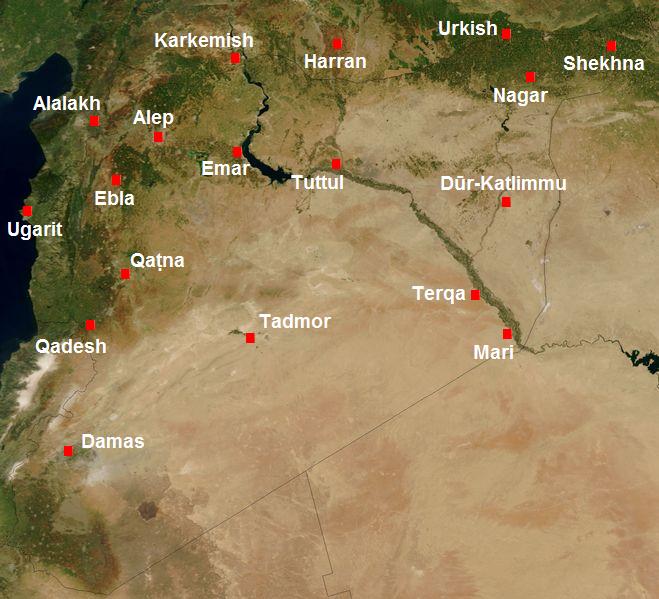Sahiri on:
[Wikipedia]
[Google]
[Amazon]
 Zahiran also known as Sahiri or Sa-hi-ri, also known as Zahiran was an
Zahiran also known as Sahiri or Sa-hi-ri, also known as Zahiran was an
Iron Age
The Iron Age is the final epoch of the three-age division of the prehistory and protohistory of humanity. It was preceded by the Stone Age (Paleolithic, Mesolithic, Neolithic) and the Bronze Age (Chalcolithic). The concept has been mostly appl ...
city of the ancient near east. It was a city in what is today Syria.
During the Mari-Ebla war (2300 BC) Zahiran was the site of a battle between Igrish-Halam
Igrish-Halam or Igriš-Halab, was a king of the ancient city state of Ebla. His name means "(The god of) Halab has driven away (the opponent)", hence, the name might be a commemoration of an Eblaite victory that led to the incorporation of lands ...
King of Ebla, and Iblul-il
Iblul-Il (reigned c. 2380 BC), was the most energetic king (Lugal) of the second Mariote kingdom, noted for his extensive campaigns in the middle Euphrates valley against the Eblaites, and in the upper Tigris region against various opponents, wh ...
, King of Mari.
About a decade
A decade () is a period of ten years. Decades may describe any ten-year period, such as those of a person's life, or refer to specific groupings of calendar years.
Usage
Any period of ten years is a "decade". For example, the statement that "d ...
latter it would have been absorbed into the empire of Sargon of Akkad
Sargon of Akkad (; akk, ''Šarrugi''), also known as Sargon the Great, was the first ruler of the Akkadian Empire, known for his conquests of the Sumerian city-states in the 24th to 23rd centuries BC.The date of the reign of Sargon is high ...
.
The town was sacked in the Battle of Nineveh (612 BC)
The Battle of Nineveh is conventionally dated between 613 and 611 BC, with 612 BC being the most supported date. Rebelling against the Assyrians, an allied army which combined the forces of Medes and the Babylonians, besieged Nineveh and sacked ...
. The chronicle of Aššur-uballit II, known as Chronicle 3, states of the Battle of Nineveh between Babylonian and Assyria
Assyria (Neo-Assyrian cuneiform: , romanized: ''māt Aššur''; syc, ܐܬܘܪ, ʾāthor) was a major ancient Mesopotamian civilization which existed as a city-state at times controlling regional territories in the indigenous lands of the As ...
n armies that "''in the month Âbu the king of Akkad and his army went upstream to Mane
Mane may refer to:
* Mane (horse), the line of hair along the spine of the neck
* Mane (lion), the hair found around the male mammal's neck
In arts and entertainment
* ''Mane'' (film) is a 1990 Kannada language film directed by Girish Kasaravall ...
, Sahiri and Bali-hu. He plundered them, sacked them extensively and abducted their gods.''"Bill T. Arnold, Bryan E. Beyer, Readings from the Ancient Near East: Primary Sources for Old Testament
The Old Testament (often abbreviated OT) is the first division of the Christian biblical canon, which is based primarily upon the 24 books of the Hebrew Bible or Tanakh, a collection of ancient religious Hebrew writings by the Israelites. The ...
Study (Baker Academic, 2002) p. 156.
References
{{reflist, 2 Amorite cities Former populated places in Syria Tells (archaeology) Bronze Age sites in Syria 7th century BC